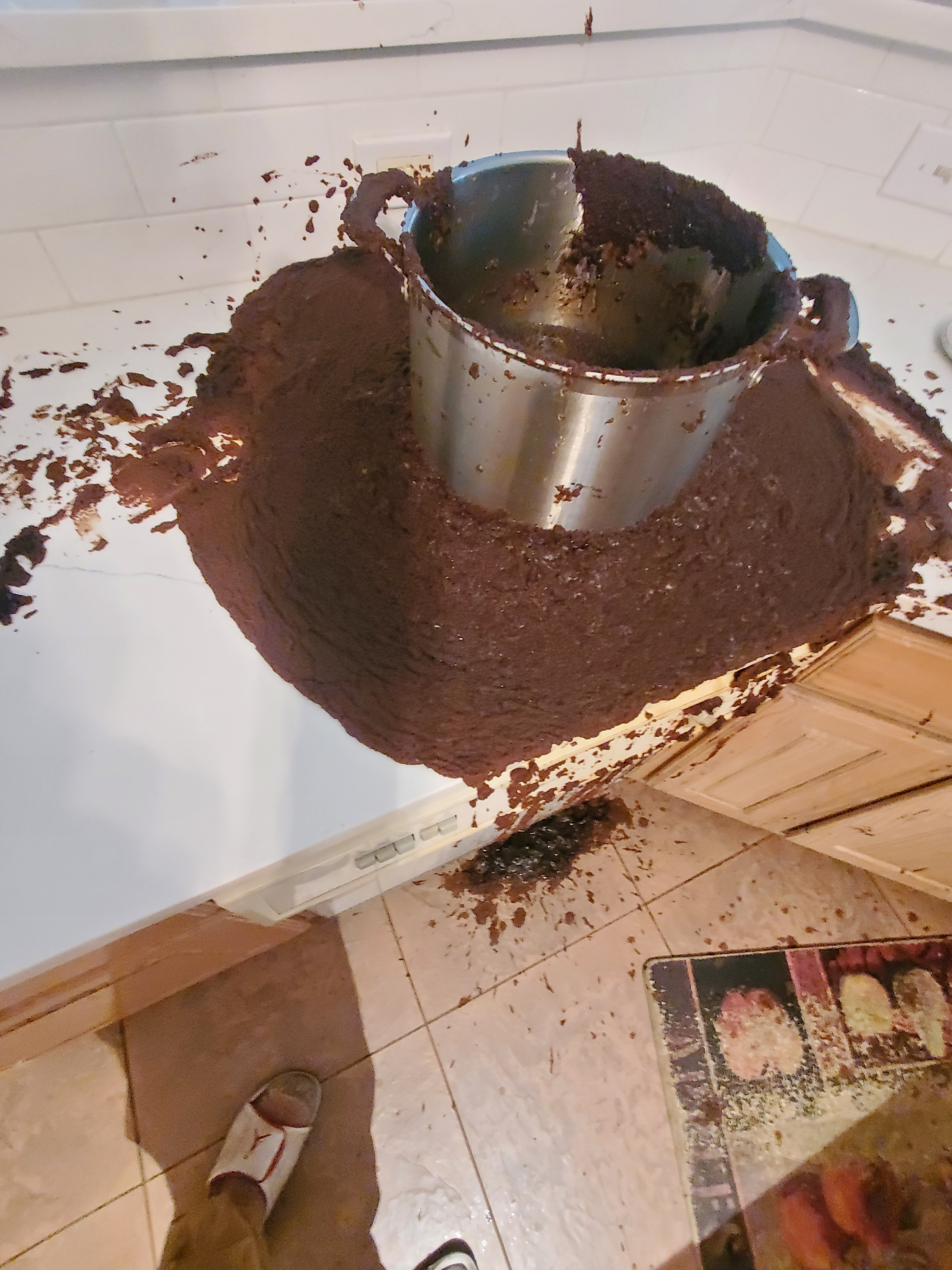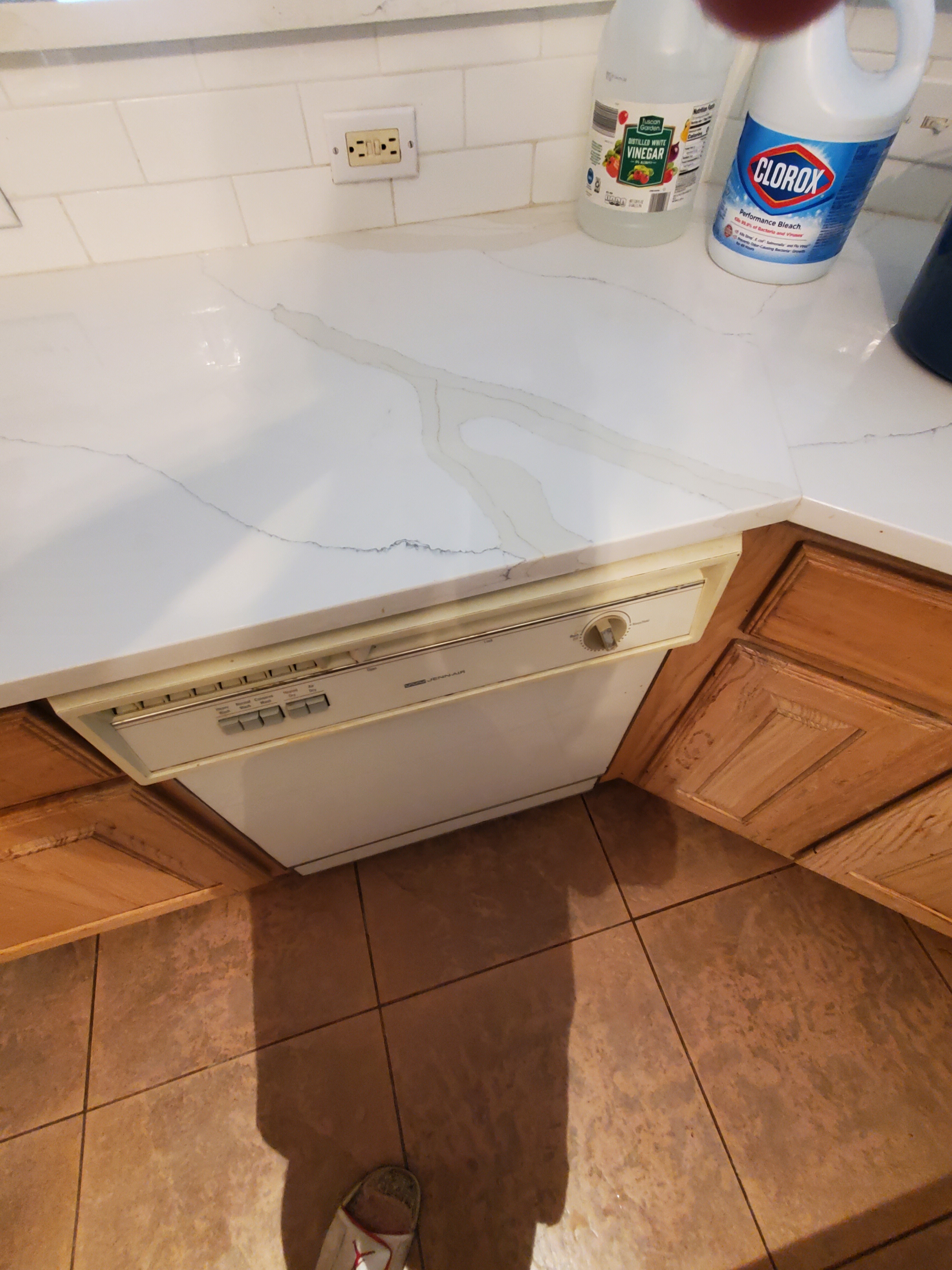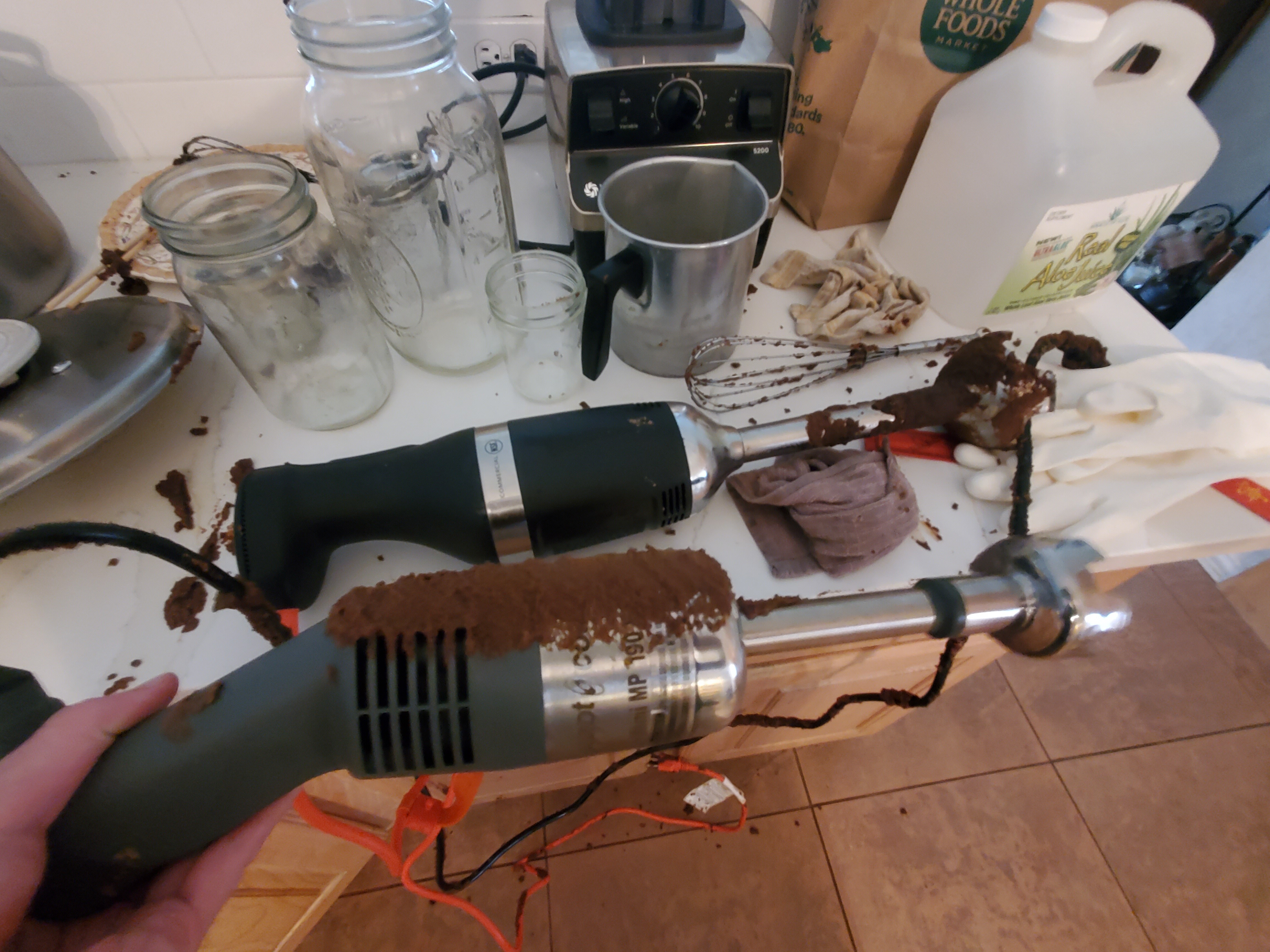- Joined
- Dec 8, 2017
- Messages
- 136
- Reaction score
- 143
Hey u guys, i screwed up some pine tar soap real good!! Check it out....

That pt was my 3rd hp batch.
Here's my 2nd hp batch w 10 oz less oil than batch #3 and i soaped at the same slightly-higher-than-approved temp but the pt volancoed on me like nothing I've seen. It was a monster rising up from the depths.

Little volcano in 12 quart pot below, but it didn't ruin my day

I took it off the heat @ 215 like Green said but the latent heat in steel pot raised temp to 250 by the time I got my lye mixed.
New 16 quart ss stock pot otw but even larger pot w 1/3rd more capacity would not have saved me from this volcano monster. While i was cleaning i remembered Green said in the book that back in the1800s for industrial hp soapmaking they used pots 3 stories high- prob for volcano space so they could cook at circa 400 degrees.
Anyway, I've screwed up my last two batches of pt. I would really like to have some more pt soap. I've been all out for several months.
Guess I should have tested pt w a smaller batch. That's the first time I've ever lost an entire batch.

That pt was my 3rd hp batch.
Here's my 2nd hp batch w 10 oz less oil than batch #3 and i soaped at the same slightly-higher-than-approved temp but the pt volancoed on me like nothing I've seen. It was a monster rising up from the depths.

Little volcano in 12 quart pot below, but it didn't ruin my day

I took it off the heat @ 215 like Green said but the latent heat in steel pot raised temp to 250 by the time I got my lye mixed.
New 16 quart ss stock pot otw but even larger pot w 1/3rd more capacity would not have saved me from this volcano monster. While i was cleaning i remembered Green said in the book that back in the1800s for industrial hp soapmaking they used pots 3 stories high- prob for volcano space so they could cook at circa 400 degrees.
Anyway, I've screwed up my last two batches of pt. I would really like to have some more pt soap. I've been all out for several months.
Guess I should have tested pt w a smaller batch. That's the first time I've ever lost an entire batch.
Last edited:







 Nope. Not so.
Nope. Not so. 

